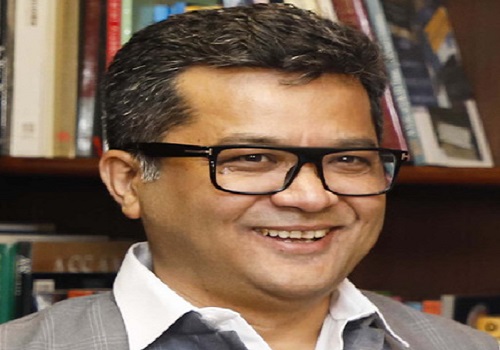No Major Policy Announcements Likely in the Interim Budget by CareEdge Rating

No Major Policy Announcements Likely in the Interim Budget
The upcoming pre-election interim budget occurs at a juncture when the overall economic landscape appears stable. This is underpinned by the easing of financial conditions, robust macroeconomic data. Nonetheless, the current budgeting exercise is also confronted by economic headwinds such as the deceleration in the global economy, pressures in the agriculture sector, and strains on the rural economy
Given that 2024 is a year of general election the FM will present a vote of account or interim budget, rather than a comprehensive annual budget. The Finance Minister's declaration that it will be a vote of account suggests that no significant policy announcements are likely expected in this interim budget. The incoming government is anticipated to unveil its budget in July. With the announcement of the election dates around mid-March, Model Code of Conduct (MCC) is expected to come into effect barring the government from announcing any policy decisions.
Nevertheless, the significance of this budget should not be understated, as it provides an opportunity for the government to underscore its economic accomplishments in the lead-up to the 2024 general elections. The budgetary presentation serves as a platform for the outgoing government to showcase its fiscal stewardship and economic achievements. Moreover, the fiscal mathematics of the budget will offer valuable insights, providing a comprehensive understanding of the potential trajectory of fiscal policy in the post-election period, assuming a policy continuity.
A Closer Look at the Fiscal Mathematics
Below are the key highlights of the fiscal maths:
1. Direct Taxes Outperforms Indirect Taxes:
In the fiscal year 2024, the government's tax revenue collections have been buoyed by robust growth in direct tax collections. According to data from the Comptroller and Auditor General (CAG) for the April-November period, direct tax collections have surged at an impressive rate of 24.8% YoY, significantly outpacing the full-year budgeted growth of 10.5%. In contrast, gross indirect tax collections recorded a more modest growth of 5.1% YoY during the same period, falling short of the full-year budgeted growth of 10.5%.
The slowdown in external trade and declining commodity prices has notably impacted custom collections, resulting in nearly stagnant growth at 0.3% YoY in the April-November period. Excise duty collections are anticipated to contract for the entire fiscal year, potentially influenced by the excise duty cut on petrol and diesel announced in the previous fiscal year, coupled with a reduction in special additional excise duty (SAED) on crude oil. Even Goods and Services Tax (GST) collections in the April-November period grew by 10.3%, marginally below the budgeted growth rate of 12.1% for the entire year. Driven by the strong performance of the direct taxes, we expect gross tax collection to rise by 11.9%, higher than the budgeted growth of 10.4%, thereby exceeding the budgeted amount by about Rs 450 billion. While indirect taxes are anticipated to fall short by approximately Rs 490 billion in FY24 from the budgeted amount, the direct tax collections are expected to surpass the budgeted value approximately by a significant Rs 940 billion, reflecting the strong performance of direct tax components.
Tax Buoyancy for FY25 is projected at 1.2

2. Higher RBI’s Transfer, Strong CPSE Dividend and good performance of PSBs to Keeps Non-Tax Revenue Elevated:
While the centre has budgeted a non-tax revenue collection of about Rs 3 trillion, a record dividend transfer of Rs 874.2 billion by the Reserve Bank of India (RBI) has resulted in higher than budgeted collection of non-tax revenue. Concurrently, 12 public sector banks (PSBs) exhibited commendable performance, witnessing a stellar profit growth of 66% YoY in H1 FY23. The robust performance of PSBs is also expected to keep dividend transfers from PSBs elevated. In addition to these contributions from RBI and PSBs, the dividends from CPSEs are expected to surpass the budgeted value in FY24. According to the latest data from the Department of Investment and Public Asset Management (DIPAM), CPSE dividends stand at Rs 439.8 billion, surpassing the FY24 budgeted value of Rs 430 billion. Our projections suggest an estimated Rs 550 billion in dividends from Public Sector Undertakings (PSUs)
The higher surplus transfer from the RBI, higher CPSE dividends, and the robust performance of PSBs collectively indicate an additional collection of Rs 650 billion over and above the FY24 budgeted non-tax revenue.
3. Tax and Non-Tax Revenue to Make up for Disinvestment Shortfall:
Although the Union Budget has allocated Rs 510 billion for disinvestments in the fiscal year 2024, the latest data from the DIPAM reveals that the government has garnered only Rs 100.5 billion through disinvestments so far. With the upcoming lection and the imminent implementation of the Model Code of Conduct (MCC) just months away, there appears to be limited scope for advancement in big-ticket divestment initiatives. Consequently, our projection for FY24 divestment stands at approximately Rs 150 billion. The big-ticket divestment initially planned for this year involving IDBI Bank now appears uncertain. Previous attempts to divest from BPCL and Pawan Hans were unsuccessful, and stake sales in the Shipping Corporation of India are currently hindered by the demerger of land assets. The projected Rs 360 billion shortfall in the non-debt capital receipts due to slow progress on divestment is expected to be covered by better-than-budgeted performance of tax and non-tax revenues.
4 Focus on Capex to Continue:
We expect the government to stick to its capex target of Rs 10 trillion in FY24 and raise it further by ~10% to Rs 11 trillion in FY25. The capex to total expenditure ratio is expected to inch up marginally to around 23% in FY25. The government has been focussing on public infrastructure to drive capex growth
Above views are of the author and not of the website kindly read disclaimer
























